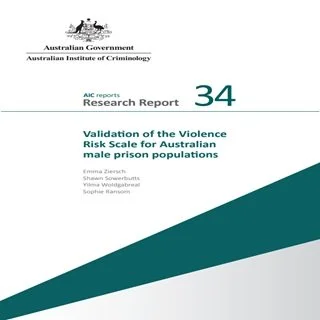By Emma Ziersch, Shawn Sowerbutts, Yilma Woldgabreal, Sophie Ransom
The Violence Risk Scale (VRS) is a tool designed to assess and predict risk of future offending, inform decisions around therapeutic intervention and measure changes in violence risk as a result of treatment. This study investigated the discriminative and predictive validity of the VRS for Australian Aboriginal and non-Indigenous males convicted of violent offending in multiple jurisdictions.
The Violence Risk Scale (VRS) is a risk assessment tool designed to assess and predict risk of future offending, inform decisions around therapeutic intervention and measure changes in violence risk as a result of treatment. While the tool has been used extensively both internationally and in Australia, its applicability to our Australian population is unclear.
This study investigated the discriminative and predictive validity of the VRS for Australian Aboriginal and non-Indigenous males convicted of violent offending in multiple jurisdictions. The VRS total score had moderate discriminative accuracy for violent reoffending at five-year follow-up. However, Aboriginal males were significantly more likely to be categorized as high risk, and additional discrimination measures revealed variation in performance between Aboriginal and non-Indigenous males. Implications of the findings for correctional practice and recommendations to reduce bias in the assessment of Aboriginal offenders are discussed.
Research Report no. 34. Canberra: Australian Institute of Criminology. 2025. 66p



